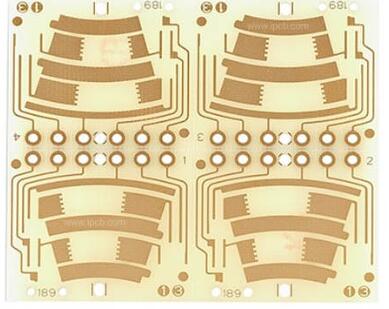Ceramic circuit boards are pcbs made of ceramic materials,usually using high-purity alumina ceramics as the substrate.Compared with traditional plexiglass fiber circuit boards, this has higher mechanical strength,better high temperature resistance and thermal conductivity,and also better dimensional and chemical stability.

Some advantages of ceramic circuit boards and traditional PCBs
1) High-temperature performance: Ceramic pcb boards can withstand temperatures up to 1000 ° C, while traditional PCBs can usually only withstand temperatures between 100-200 ° C.
2) Thermal conductivity: The thermal conductivity of ceramic circuit boards is usually 3-5 times higher than that of traditional PCBs. For example, the thermal conductivity of aluminum oxide ceramics (Al2O3) is 30 W/mK, while the thermal conductivity of fiberglass board (FR-4) is only 0.2 W/mK.
3) Dielectric constant: The dielectric constant of ceramic circuit boards is usually between 5-10, while the dielectric constant of traditional PCBs is usually between 4-6. This means that ceramic circuit boards can provide better signal transmission quality.
4) Strength and hardness: Ceramic pcbs are usually harder and more durable than traditional PCBs because they are made of ceramic materials. For example, the strength of aluminum oxide ceramics is more than 10 times that of ordinary glass, and the hardness is more than 2 times that of ordinary glass.
5) Corrosion resistance: Ceramic circuit boards have excellent corrosion resistance and can be used in strong acid and alkaline environments. For example, alumina ceramics can operate stably for a long time in strong alkaline acidic solutions such as HF, NaOH, and KOH, while traditional PCBs are prone to corrosion.
6) Volume and weight: Ceramic circuit boards can be made into very thin, very small sizes, thus achieving higher integration and smaller dimensions. Meanwhile, ceramic pcbs are also lighter compared to traditional PCBs.
The application of ceramic plates
Due to its advantages such as high temperature, high frequency, high strength, high reliability, and low dielectric constant, ceramic circuit boards are widely used in the following fields and industries:
1. Aerospace:Ceramic pcb boards can withstand extreme temperatures and high radiation environments,making them widely used in aerospace applications such as satellites, missiles, and airplanes.
2. Military: Ceramic circuit boards are also widely used in applications such as military radar, missiles, fighter jets, etc. that require high temperature, high pressure, and high radiation.
3. Medical devices: The antibacterial, high-temperature, and corrosion-resistant properties of ceramic pcb boards can meet the high quality and reliability requirements of medical devices, such as being widely used in fields such as cardiac pacemakers, prosthetics, and high-pressure syringes.
4. Electronic products: Ceramic pcb boards are suitable for electronic products that require high speed, high frequency, and high power, such as mobile phones, tablets, LED lights, etc.
5. New energy: Ceramic circuit boards are also applied in new energy fields such as solar and wind energy, such as solar panels and wind turbines.
6. Other fields: Ceramic circuit boards are also suitable for industrial control, automotive electronics, high-speed trains, communication and other fields.
Ceramic circuit board is a type of circuit board made from ceramic materials such as aluminum oxide, aluminum nitride, zirconia, etc. It can also become a ceramic PCB board. It not only has advantages such as wear resistance, oxidation resistance, and high-temperature resistance but also has a larger capacity to accommodate more components under the same surface area as traditional PCB boards. Therefore, it is widely used in the high-precision equipment industry.